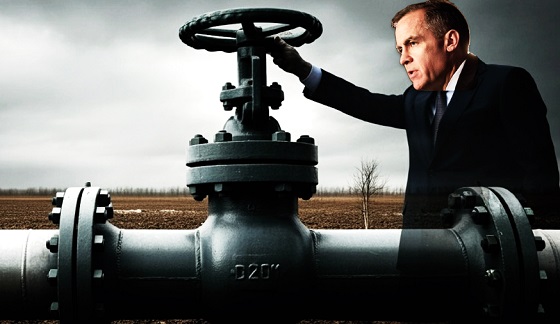Alberta
Alberta rail hub doubling in size to transport plastic from major new carbon-neutral plant

Haulage bridge at Cando Rail & Terminals’ Sturgeon Terminal in Alberta’s Industrial Heartland, near Edmonton. Photo courtesy Cando Rail & Terminals
From the Canadian Energy Centre
By Will Gibson
Cando Rail & Terminals to invest $200 million to support Dow’s Path2Zero petrochemical complex
A major rail hub in Alberta’s Industrial Heartland will double in size to support a new carbon-neutral plastic production facility, turning the terminal into the largest of its kind in the country.
Cando Rail & Terminals will invest $200 million at its Sturgeon Terminal after securing Dow Chemical as an anchor tenant for its expanded terminal, which will support the planned $8.9 billion Path2Zero petrochemical complex being built in the region northeast of Edmonton.
“Half of the terminal expansion will be dedicated to the Dow project and handle the products produced at the Path2Zero complex,” says Steve Bromley, Cando’s chief commercial officer.
By incorporating carbon capture and storage, the complex, which began construction this spring, is expected to be the world’s first to produce polyethylene with net zero scope 1 and 2 emissions.
The widely used plastic’s journey to global markets will begin by rail.
“Dow stores their polyethylene in covered railcars while waiting to sell it,” Bromley says.
“When buyers purchase it, we will build unit trains and those cars will go to the Port of Prince Rupert and eventually be shipped to their customers in Asia.”
A “unit train” is a single train where all the cars carry the same commodity to the same destination.
The expanded Cando terminal will have the capacity to prepare 12,000-foot unit trains – or trains that are more than three-and-a-half kilometers long.
Construction will start on the expansion in 2025 at a 320-acre site west of Cando’s existing terminal, which 20 industrial customers use to stage and store railcars as well as assemble unit trains.
Bromley, a former CP Rail executive who joined Cando in 2013, says the other half of the terminal’s capacity not used by the Dow facility will be sold to other major projects in the region.
The announcement is the latest in a series of investments for Cando to grow its operations in Alberta that will see the company spend more than $500 million by 2027.
The company, which is majority owned by the Alberta Investment Management Corporation previously spent $100 million to acquire a 1,700-railcar facility in Lethbridge along with $150 million to build its existing Sturgeon terminal.
Cando Rail’s existing Sturgeon Terminal near Edmonton, Alberta. Photo courtesy Cando Rail & Terminals
“Alberta is important to us – we have 300 active employees in this province and handle 900,000 railcars annually here,” Bromley says.
“But we are looking for opportunities across North America, both in Canada and the United States as well.”
Cando released the news of the Sturgeon Terminal expansion at the Alberta Industrial Heartland Association’s annual conference on Sept. 19.
“This is an investment in critical infrastructure that underpins additional growth in the region,” says Mark Plamondon, the association’s executive director.
The announcement came as the association marked its 25th anniversary at the event, which Plamondon saw as fitting.
“Dow’s Path2Zero came to the region because of the competitive advantages gained by clustering heavy industry. Competitive advantages are built from infrastructure that’s already here, such as the Alberta Carbon Trunk Line, which transports and stores carbon dioxide for industry,” he says.
“Having that level of integration can turn inputs into one operation into outputs for another. Competitive advantages for one become advantages for others. Cando’s investment will attract others just as Dow’s Path2Zero was a pull for additional investment.”
Alberta
Too Graphic For A Press Conference But Fine For Kids In School?

From the Frontier Centre for Public Policy
By Lee Harding
Alberta moves to remove books after disturbing content, too graphic for media to view, was found in schools
Should elementary school children be given books to read with harsh insults against minorities, depictions of oral sex, and other disturbingly graphic and explicit content?
Such books have been in some Alberta elementary schools for a while, and in many school libraries across Canada.
In late May, the Alberta government announced it would establish new guidelines regarding age-appropriate materials in its schools. A government press release included quotes with disturbing content, but at a press conference, Education Minister Demetrios Nicolaides said some book illustrations could not be shown.
“I would show these images to all of you here and to the media, but they are too graphic for a live-stream media event. These examples … illustrate the kind of content that raises concerns amongst parents,” Nicolaides said.
You don’t say? This seems like the sort of stuff no one, except a pervert in a park, would dream of showing to a child. Ironically, the inability to publicize such graphic materials is part of the reason they have been shown to children with little public awareness.
Citizens’ group Action4Canada (A4C) has claimed its activism played a pivotal role in the Alberta decision. The organization has compiled a 36-page document online with examples of objectionable content in Canadian schools. Among the worst is Identical by Ellen Hopkins, which includes graphic descriptions of a little girl being molested by her father.
A4C founder Tanya Gaw has repeatedly tried to raise concerns about objectionable books with school boards, often without success. In some cases, she isn’t even allowed on the agenda if she states her topic upfront. When she is permitted to speak, she’s frequently cut off as soon as she begins quoting from the books, preventing the content from entering the public record.
In January 2023, Gaw made an online presentation to a school board in Mission, B.C. regarding materials in their schools. As she began to screenshare what was there, some board members objected, saying such permission had not been given in advance.
One month later, the board banned Action4Canada from making any further presentations. In later media interviews, the board chair justified the decision by saying Gaw’s PowerPoint contained some graphic and “inappropriate images.”
Exactly, and that is the problem. A recent check showed Mission’s school division only removed four of 15 books A4C objected to. Gaw is just glad “Identical” is one of them.
Pierre Barns, a father from Abbotsford, B.C., made it his mission to notify school boards across Canada what was on their school shelves. An online search was all it took to confirm. A “reply all” from a board member at the Halton School District in Ontario was most ironic.
“I am concerned. This individual has included links to publications and videos which may contain illegal content,” she wrote.
“I’m not sure how to investigate the content of the email safely. Would you please advise us whether or not this person ought to be reported to police? Is there some action we should take?”
There probably was action they should have taken, such as removing the books, but that never happened. Later, they defended a biologically male teacher in their school division who made international headlines by wearing large prosthetic breasts to school.
The Alberta government has committed to conducting public consultations before implementing new policies. It’s a good time for parents and citizens there and in other provinces to speak up. A young mind is a terrible thing to corrupt, but unfortunately, some schools are part of this corrosive effort.
Lee Harding is a research fellow with the Frontier Centre for Public Policy.
Alberta
Alberta’s Environmental Changemakers Shine at the 2025 Emerald Awards
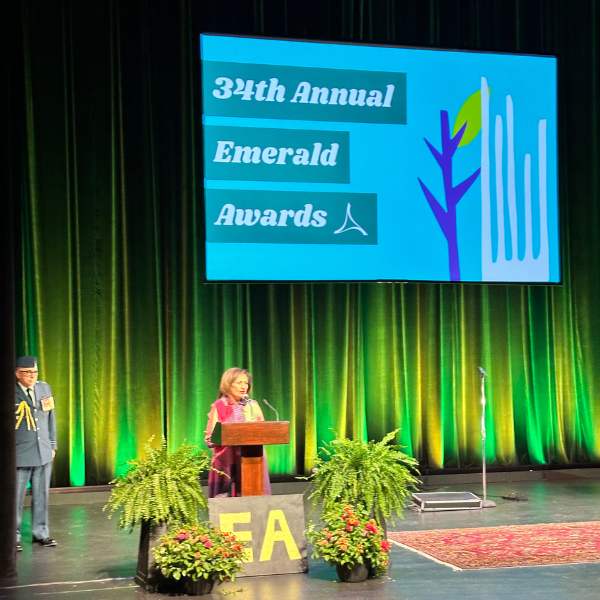
EDMONTON — From grassroots organizers to major industry players, Albertans working to protect the environment were in the spotlight this week at the 34th Annual Emerald Awards. Held at Edmonton’s Timms Centre for the Arts on June 5, the event recognized 14 outstanding recipients from across the province whose work is helping to build a more resilient, sustainable Alberta.
The awards, presented by the Alberta Emerald Foundation (AEF), are among the most prestigious environmental honours in Canada—celebrating projects that tackle everything from emissions reduction and conservation to education and climate adaptation.
This year marked a record-breaking number of submissions, with 72 nominations—AEF’s highest total in over a decade. A panel of independent judges selected 40 finalists across 14 categories, with one recipient named in each.
“These recipients reflect the diversity, creativity, and deep commitment to environmental stewardship we’re seeing across Alberta,” said Marisa Orfei, Executive Director of the Alberta Emerald Foundation. “Whether it’s restoring wetlands, leading innovative waste diversion programs, or inspiring change through education, each project tells a story of positive action.”
More Than Just Recognition
Along with their award, each recipient receives a $1,500 grant to support their ongoing work, a handcrafted trophy made from recycled chopsticks (courtesy of ChopValue YYC and Calgary restaurants), and a feature in the Emerald Documentary Series—which showcases environmental success stories across Alberta.
What sets the Emerald Awards apart is their inclusive approach. Winners span industries, nonprofits, Indigenous communities, youth initiatives, and municipal governments—underscoring that meaningful change can come from anywhere.
The Emerald Awards are the only program of their kind in Canada, and have become a launchpad for environmental innovation and storytelling that reaches far beyond Alberta’s borders.
To see the full list of 2025 recipients, visit albertaemeraldfoundation.ca.
-
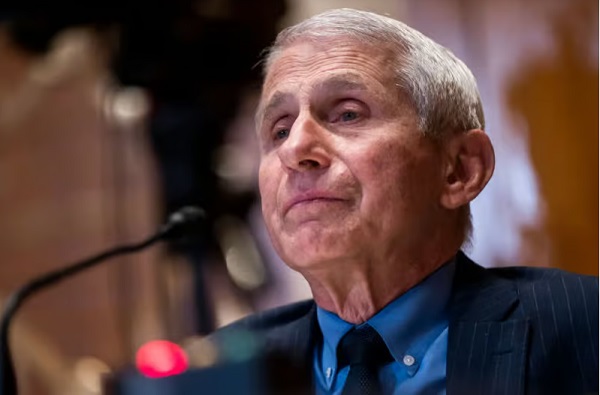
 Brownstone Institute16 hours ago
Brownstone Institute16 hours agoAnthony Fauci Gets Demolished by White House in New Covid Update
-
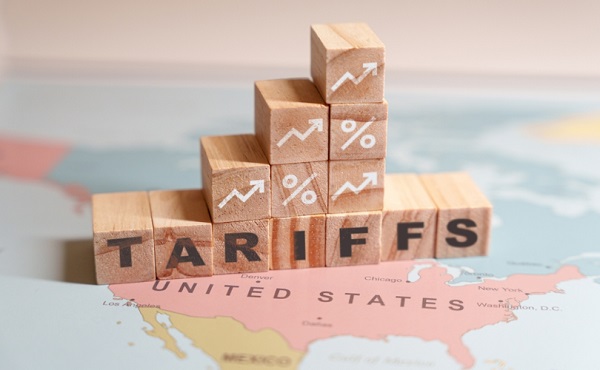
 Business17 hours ago
Business17 hours agoSobering reality check – Trump is right: Canada’s economy can’t survive a fair trade agreement with the US
-
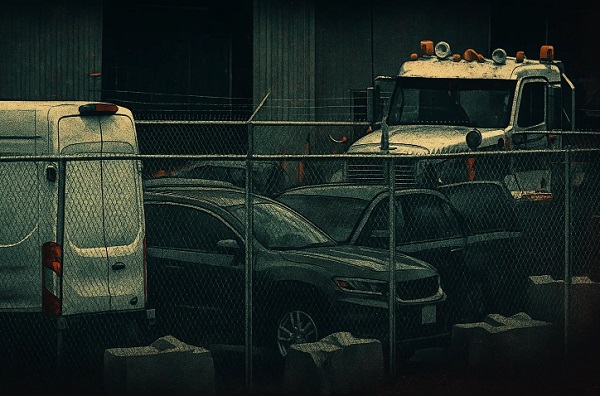
 Crime15 hours ago
Crime15 hours agoMexican Cartels Expanding Operations in Canada, Using Indigenous Reserves as Factory Hubs
-

 Fraser Institute19 hours ago
Fraser Institute19 hours agoDeclining stature of foreign affairs minister underscores Canada’s waning influence on world stage
-

 Business18 hours ago
Business18 hours agoOttawa must listen to the West
-

 Automotive4 hours ago
Automotive4 hours agoCanada’s EV house of cards is close to collapsing
-

 Alberta2 days ago
Alberta2 days agoAlberta’s Environmental Changemakers Shine at the 2025 Emerald Awards
-

 Banks2 days ago
Banks2 days agoLiberal border bill could usher in cashless economy by outlawing cash payments




